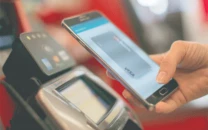Tech Society: Generation Text
Pakistan had the third highest SMS traffic in the world in 2010.

Tech Society: Generation Text
Recently, you and I received an sms from the government of Pakistan, which read: “…Ghar aanay walay Election Commission key numainday ko apna CNIC number faraham kar k apna naam voter list mein darj karwain….[Give your CNIC number to the Election Commission representative visiting your house, in order to register your name in the voting list]”. The message even ended very politely with a Shukria (Thank you).
This is a small, but a conspicuous reminder, of how the use of SMS has become an integral part of our lives. According to a report published recently by the Pakistan Telecommunication Authority (PTA) in 2010, Pakistanis collectively sent over 151 billion text messages during the year 2009. The PTA itself terms this rather “awesome” — and indeed it is.
This report cites the Philippines as the “texting capital of the world” as it generated 10 per cent of the world’s total SMS by volume. Pakistan is not far off this mark: it was ranked among the top five countries in 2009 with the highest SMS traffic during the festive season after the Philippines, Indonesia and Malaysia according to PC World. The year before, it had the largest year-on-year growth in text messaging for the Asia Pacific region. In 2010, Nokia Pakistan cited Pakistan as being the third country in the world with respect to highest SMS traffic.
So, without a doubt, Pakistanis love to text. Even late entrants in the industry of mobile service provision like Zong, have been quick to capitalise on this trend. The PTA reported that in 2009-2010, the daily average of outgoing SMS traffic on Zong’s network was approximately 29 million, whereas an independent telecoms analyst estimates that almost 55 million SMS were sent out on Zong’s network in mid July 2011.
Yet texting so frequently — or rather so freely — has not always been second nature to us. By design, when cellular services were first introduced in Pakistan in 1994 by the then sole GSM operator Mobilink, users could only send text messages of users of the same network. Hence if you were a Mobilink customer, you could only send an SMS to another Mobilink number and not to (the now defunct) Instaphone, for example.
Things did not improve when other cellular operators entered the market as the practice of “cross-network” texting was not implemented for some time. In fact inter-service SMS was not fully operational as late as 2003. This “single-network texting” phenomenon was used by operators in the early years of mobile services, especially to attract new customers who wanted to benefit from what was considered the added privilege of being able to send (expensive) on-network texts growing cellular network, thereby initially creating an “exclusive member” network.
Compare this to the current scenario where operators give away “buckets” of SMS as a free reward for reusing their defunct SIMs. Whereas the low cost and ease of use has resulted in phenomenal growth in SMS traffic, it has also given rise to a four-letter word: spam. Unsolicited SMS-based marketing by both operators and independent marketers have availed the low-cost and wide-reaching avenue of text messaging, resulting in unwanted and obnoxious messages clogging our phones.
And in fact now spam no longer remains confined to messages with commercial or humorous content. It has ventured into the domain of emotionally charged messages — classified as “mobile begging”— aimed to manipulate mobile subscribers into parting with, for example, their credit balance.
To curb the growing problem of spam, the PTA proposed draft amendments this year to its “Protection From Spam, Unsolicited, Fraudulent and Obnoxious Communication Regulations-2009,” which stipulates all operators to control spam by blacklisting subscribers. The legislation was followed by a national ad campaign, to make mobile phone aware that they can now report SMS-based spam to their respective operators via PTA-designated short codes.
Despite the negative aspects of SMS usage in Pakistan, its application for mobile banking, customer services and potentially for voting in the future is certainly impressive. I, for one, have gladly accepted the government’s invitation mentioned earlier. Via SMS, of course…
About the Author: Yasmin Malik is a Telecoms Analyst and a Visiting Faculty at the IBA
Published in The Express Tribune, November 12th, 2011.



















COMMENTS
Comments are moderated and generally will be posted if they are on-topic and not abusive.
For more information, please see our Comments FAQ